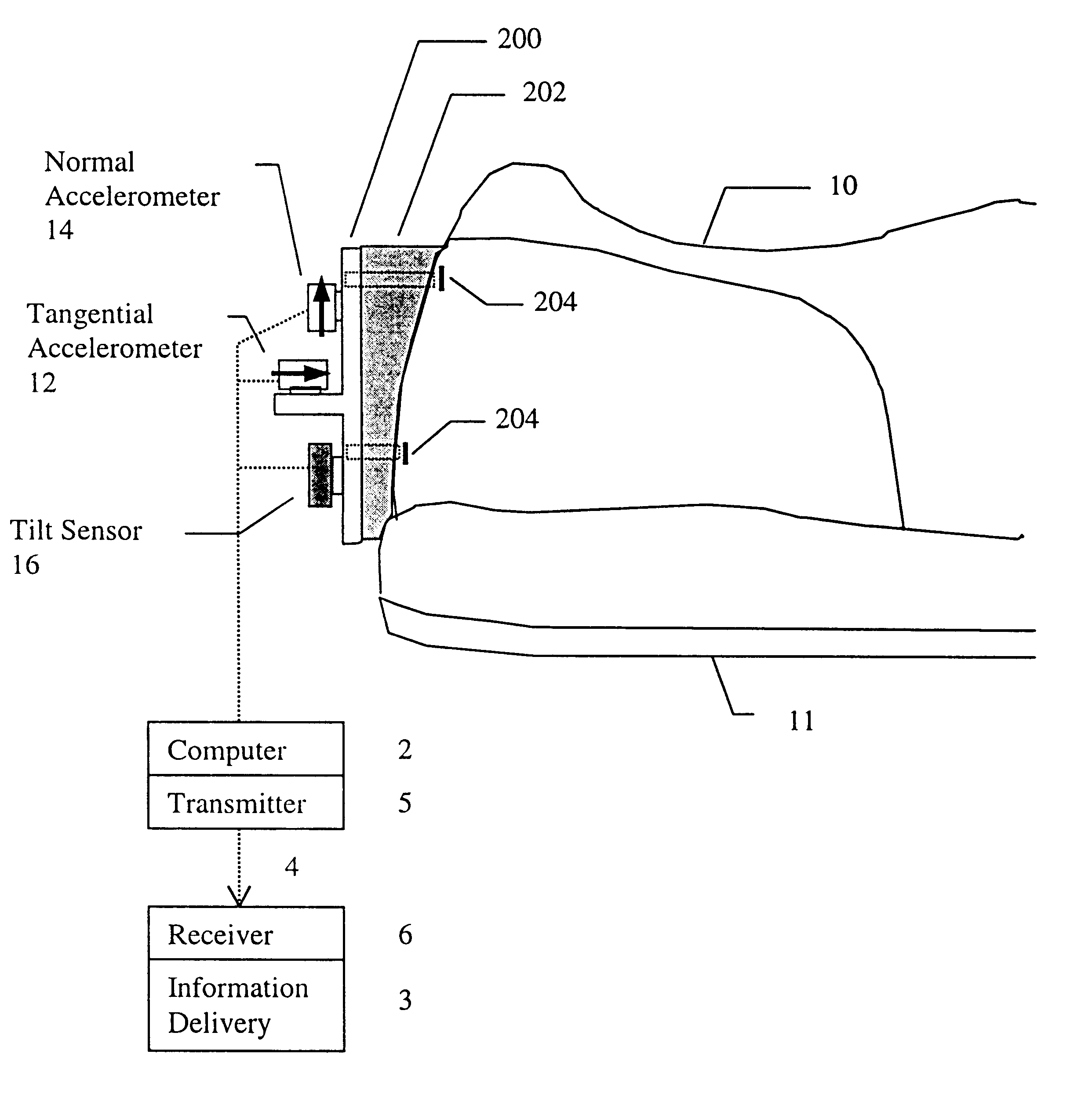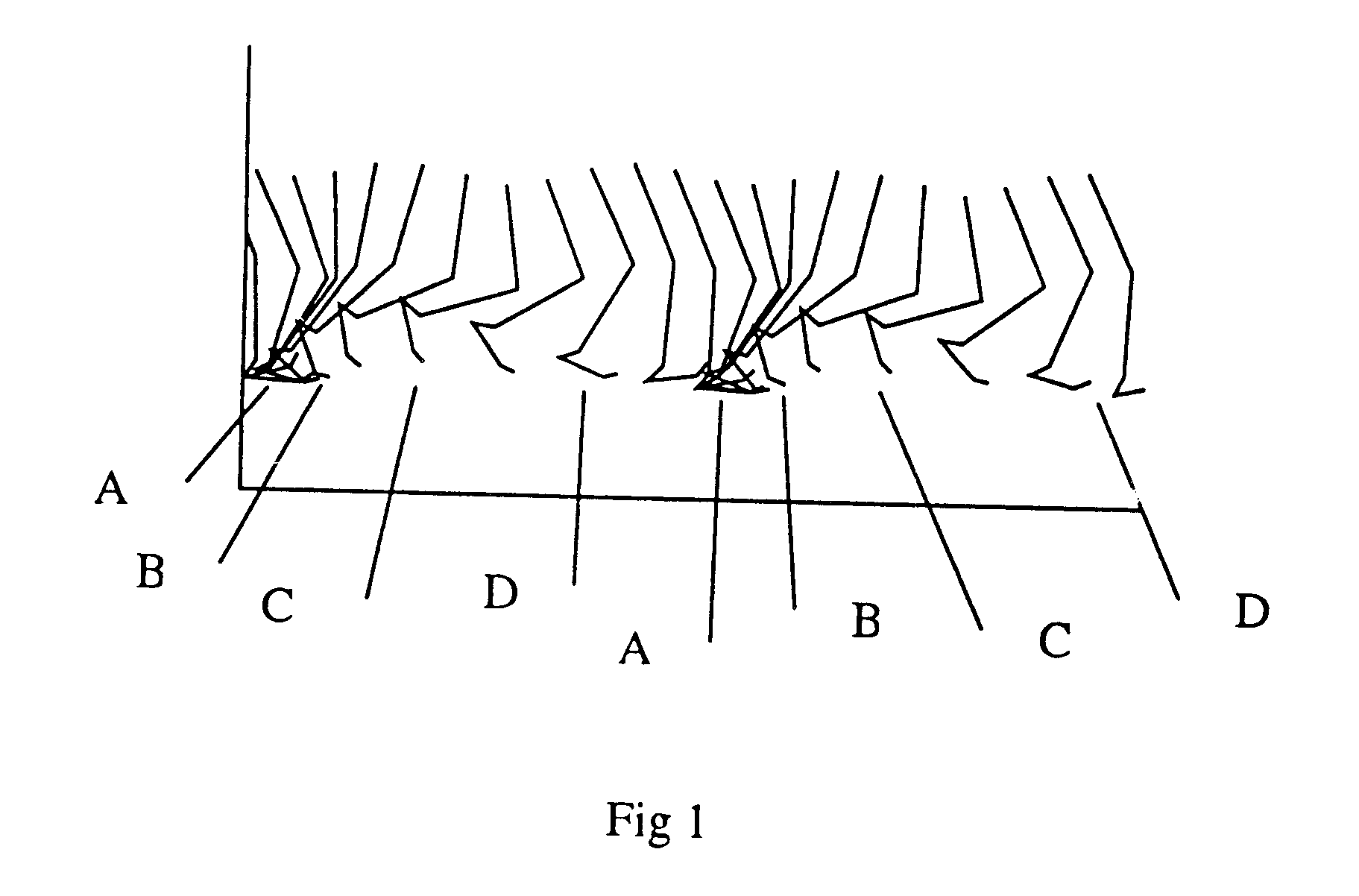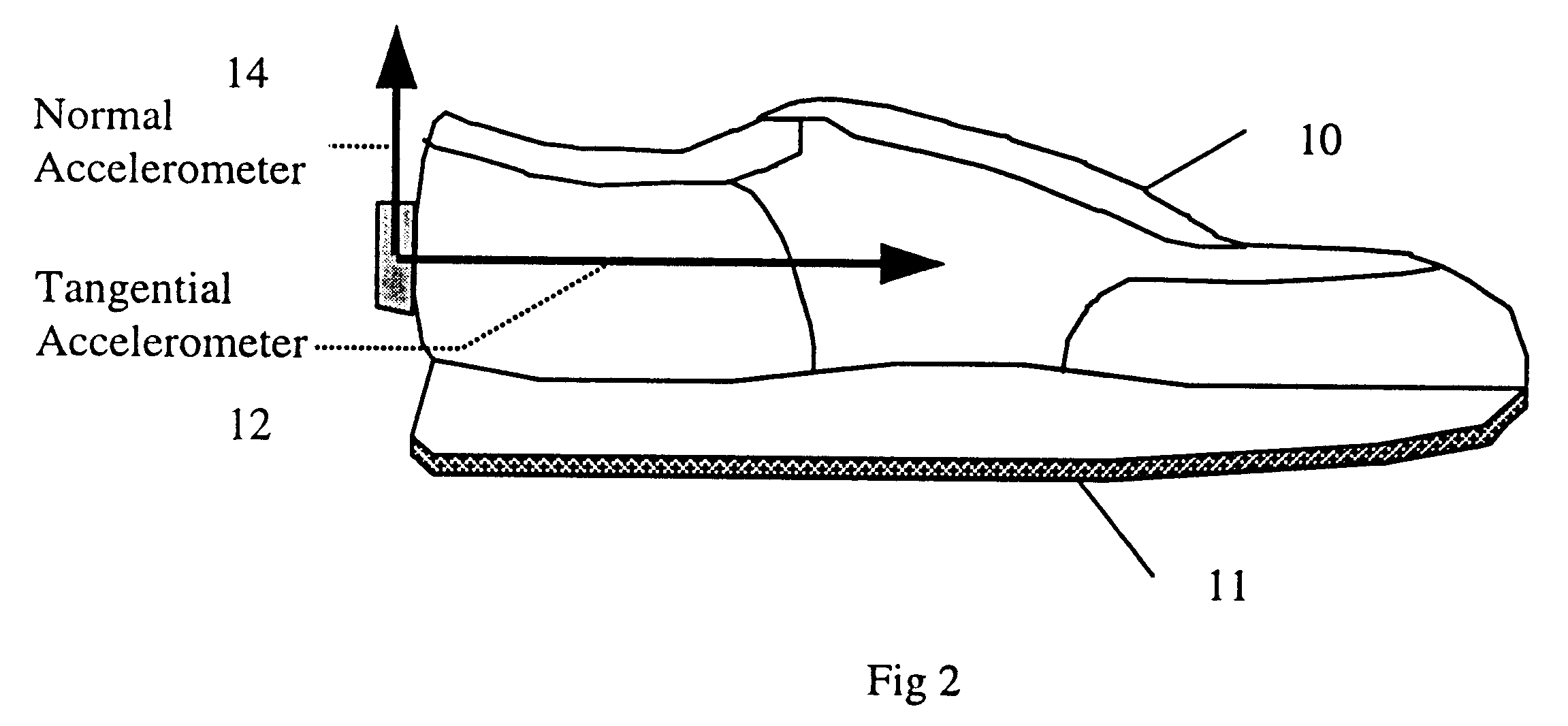Motion analysis system
a motion analysis and motion technology, applied in the field of gait kinematics measurement methods and apparatuses, can solve the problems of limited cumbersome ways to measure distance and speed, limited walking/running routes, and failure to gain wide spread us
- Summary
- Abstract
- Description
- Claims
- Application Information
AI Technical Summary
Benefits of technology
Problems solved by technology
Method used
Image
Examples
second embodiment
the invention is shown and will be described with reference to FIGS. 1A to 16A inclusive. Like reference numerals are used to indicate like parts in all embodiments.
Accelerometers are placed on the foot in essentially the same manner as described above so that the normal accelerations, a.sub.n, tangential accelerations, a.sub.t, and angular accelerations, .alpha., preferably about the intersection 104 of the tangential and normal acceleration vectors a.sub.t and a.sub.n respectively can be simultaneously measured (see FIG. 1A). The normal accelerometer measures 14 acceleration perpendicular to the base or sole 11 of the foot or shoe 10 which as above described provides the datum plane 100 defining surface 11 that defines the datum plane 100 for each stride when the sole 11 is at rest in the stance phase A of each stride. The tangential accelerometer 12 is sensitive to accelerations parallel to the base or sole 11 of the foot or shoe 10. The absolute direction of these accelerations ...
PUM
 Login to View More
Login to View More Abstract
Description
Claims
Application Information
 Login to View More
Login to View More - R&D
- Intellectual Property
- Life Sciences
- Materials
- Tech Scout
- Unparalleled Data Quality
- Higher Quality Content
- 60% Fewer Hallucinations
Browse by: Latest US Patents, China's latest patents, Technical Efficacy Thesaurus, Application Domain, Technology Topic, Popular Technical Reports.
© 2025 PatSnap. All rights reserved.Legal|Privacy policy|Modern Slavery Act Transparency Statement|Sitemap|About US| Contact US: help@patsnap.com



